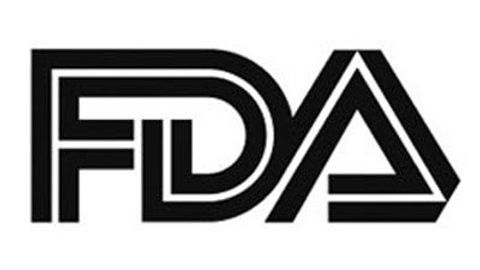FDA Gives Dordaviprone Priority Review in H3K27M-Mutant Diffuse Glioma
The FDA has granted a priority review to dordaviprone for treating patients with recurrent H3K27M-mutant diffuse glioma, a population with limited treatment options.

- The FDA has accepted and granted priority review to a new drug application (NDA) for the accelerated approval of dordaviprone (ONC201).
- Dordaviprone is a novel small molecule imipramine being developed for the treatment of patients with recurrent H3K27M-mutant diffuse glioma.
- A target action date of August 18, 2025, has been set under the Prescription Drug User Fee Act (PDUFA).
The FDA has accepted and given priority review to an NDA for the accelerated approval of dordaviprone for treating patients with recurrent H3K27M-mutant diffuse glioma, and a PDUFA target action date of August 18, 2025, has been set.1
Dordaviprone is a first-in-class and novel small molecule imipridone that works by selectively targeting the mitochondrial protease ClpP and dopamine receptor D2.1 Previously, dordaviprone was granted fast track designation in the US and orphan drug designations in the US, Europe, and Australia.
According to a press release from Chimerix, the drug’s developer, the FDA has designated dordaviprone as a treatment for rare pediatric diseases. Additionally, Chimerix has applied for a priority review voucher (PRV) under this designation.
“This milestone moves us closer to making the first treatment specifically for recurrent H3K27M-mutant diffuse glioma available to patients,” said Mike Andriole, chief executive officer of Chimerix, in the press release. “Individuals with this aggressive glioma have very limited treatment options beyond palliative care. We are working closely with the FDA to expedite the review process while also preparing for potential commercialization to ensure patients receive access as soon as possible.”
The NDA is backed by data from a compassionate use program, a phase 1 trial (NCT03416530), and 3 phase 2 trials (NCT03295396; NCT02525692; NCT03134131).2
Human brain activity: ©See Less - stock.adobe.com

Pooled data that were published in the Journal of Clinical Oncology showed an objective response rate (ORR) of 20% (95% CI, 10.0%-33.7%) based on Response Assessment in Neuro-Oncology high-grade glioma (RANO-HGG) criteria among 50 patients with H3K27M-mutant diffuse glioma, as of May 31, 2021. This included 1 complete response and 9 partial responses.
The disease control rate (DCR) was 40% (95% CI, 26.4%-54.8%), with a median duration of response (DOR) of 11.2 months (95% CI, 3.8-not reached) and a median time to response (TTR) of 8.3 months (range, 1.9-15.9).
Looking at safety, 49 of 50 patients experienced at least 1 treatment-emergent adverse event (TEAE), with the most frequently reported being fatigue (46%), nausea (36%), and headache (32%).2 Treatment-related adverse events (TRAEs) of any grade were observed in 60% of patients, including fatigue (34%), nausea (18%), and decreased lymphocyte levels (14%). Grade 3 TRAEs were seen in 20% of patients, with fatigue (10%) being the only one occurring in more than 2 individuals. No grade 4 TRAEs or treatment-related deaths were reported.
Serious adverse events affected 46% of patients, with hydrocephalus and nausea each occurring in 8%. TEAEs leading to treatment discontinuation, dose reduction, or dose interruption were reported in 4 patients, though none discontinued due to TRAEs. One patient required a dose adjustment following a treatment-related pulmonary embolism.
Included in this analysis were patients with recurrent or progressive H3K27M-mutant diffuse glioma that met RANO-HGG criteria. Patients were required to be at least 2 years old, have a Karnofsky/Lansky performance status of 60 or higher, and have undergone prior radiation therapy with a minimum 90-day washout period before starting dordaviprone.
The primary end point of the study was ORR per RANO-HGG criteria, evaluated by a blinded independent central review. Secondary end points were ORR per RANO low-grade glioma criteria, DOR, TTR, DCR, best overall response, progression-free survival, overall survival, corticosteroid response rate, and performance status response rate.
REFERENCES
Chimerix announces FDA acceptance and priority review of new drug application for dordaviprone as treatment for recurrent H3 K28M-mutant diffuse glioma. News Release. Chimerix. February 18, 2025. Accessed February 19, 2025. https://tinyurl.com/57y3rxm9
Arrillaga-Romany I, Gardner SL, Odia Y, et al. ONC201 (Dordaviprone) in Recurrent H3 K27M-Mutant Diffuse Midline Glioma. J Clin Oncol. 2024;42(13):1542-1552. doi:10.1200/JCO.23.01134
FDA Grants RMAT Designation to Nogapendekin Alfa in Pancreatic Cancer
February 28th 2025The FDA granted RMAT designation to nogapendekin alfa and CAR-NK for reversing lymphopenia in patients with cancer, with promising survival data in metastatic pancreatic cancer and non–small cell lung cancer.
Read More